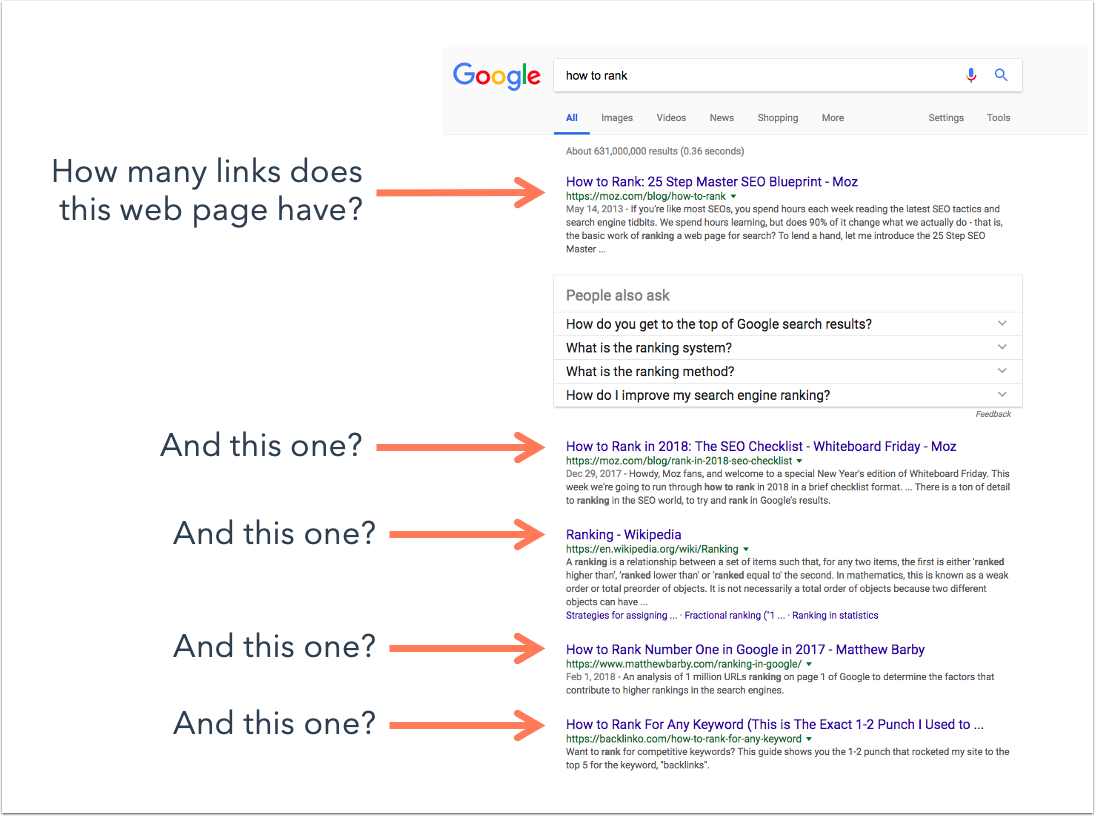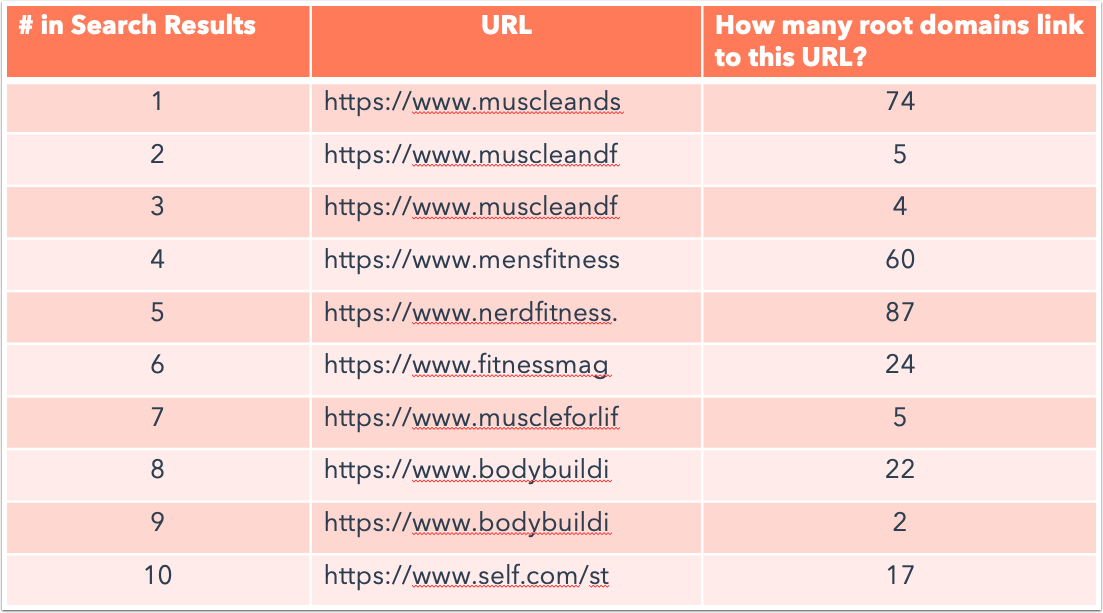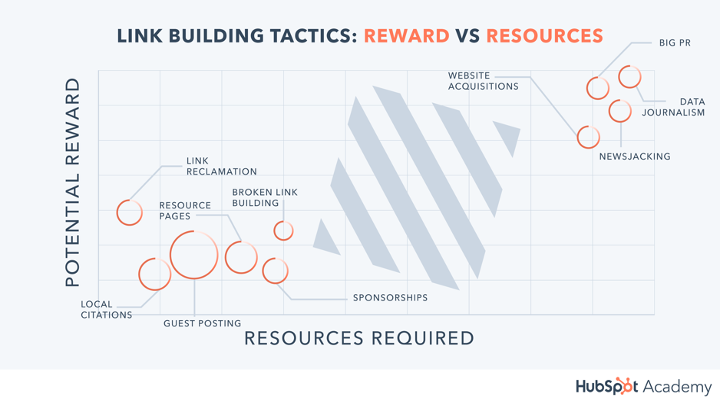About The Author

Matthew is the VP of Marketing at HubSpot and a partner at Traffic Think Tank. He's the founder of The Coin Offering, an educational website focused on blockchain technology, and the co-host of The Decrypting Crypto Podcast.
In This Article:
- How to get people to link to your website
- How many links you need to rank on the first page of Google
- How relationships help you scale your link building efforts
- Using press request alerts to scale your link building efforts
These days, creating great content just isn’t enough when it comes to ranking in search. Google doesn’t care how interesting your content is – it cares about how interesting other people think your content is. And Google measures that primarily through links to your website, or backlinks. A backlink (also called an inbound link) is a link that comes from another website to yours.
Backlinks are one of the most important factors in how search engines figure out how high they should rank your content.
Backlinks are a signal to Google that your site is a high-quality resource that people want to reference. That means that sites with more backlinks – and higher quality backlinks – tend to earn higher ranking in search.
The folks at Google said it themselves:
In general, webmasters can improve the rank of their sites by increasing the number of high-quality sites that link to their pages.
How to get people to link to your website
You can do this proactively through link building. Link building is the process of manually encouraging people to link to your website from theirs.
But why take the time to manually build links, instead of just creating content that’s good enough for people to naturally link to you?
The truth is, getting other websites to link to your website has been getting more and more difficult over the last few years. These days, when people like a piece of content you’ve written, they’re more likely to share it on social media than they are to link to it from their blog. That’s why it’s more important now than ever before to proactively build valuable links.
Remember: Not all content on your website is naturally linkable.
While people are more likely to organically link to informational content like blog posts -- it’s far less natural for people to share a link to something like a product page. This is why it’s so important for your business to have a blogging strategy that attracts people to your website.
That being said, because your product pages have direct conversion paths, they’re important pages to get links to so they can rank higher in search. By proactively reaching out to others for a product review, for example, you can build links to these less “linkable” pages.
To sum it up, if you’re doing SEO and not doing anything with link building, then your SEO efforts will simply not be effective. The key to effective link building is to complement creating great content with manually building links.
How many links you need to rank on the first page of Google
One of the most common questions we hear is this: “How many links do I need for my website to rank high in search results?”
There’s no magic answer here that’ll make Google suddenly rank your web page over another page. That said, in order for Google to consider you a contender with the results listed on page one, you need to make sure you get around the same number of links that the results ranking on page one already have.
Knowing how many links these highly ranked pages have will give you a baseline target for how many links you’ll need.

Let’s go through how to calculate a baseline target for how many links you’ll need on a given web page.
- To start, choose a broad topic that you want to be known for – one that has a lot of long tail variations. For example, if your business is a fitness center, you might go after a broad topic like “workout routines.”
- Next, open an incognito window and run a Google search. Take note of the top 10 results that show up.
- Then, one by one, pull the URL and run it through a link-checking tool. Moz has a free one called Link Explorer that lets you plug in a URL, and tells you how many root domains, or websites, link to that URL.
- Once you’ve done this for all 10 results, calculate the average number of domains that link to these sites. That will give you a general idea of how many links you’ll need in order to compete with the results on the first page of Google.

If you were trying to compete with page one results for the topic “workout routines,” you’d need about 30 backlinks from unique websites. The web pages you see here with fewer backlinks that still rank on page one probably live on websites that have high domain authority.
Once you figure out how many links your content should have in order to compete in search, you might be thinking to yourself, “How do I identify which piece of content should contain all those links?” Again, you’ll look to the top 10 results in search for the same broad topic. Click in to each URL and skim through the content. Ask yourself questions like:
- What are the common themes and elements you see on these pages?
- What commonalities do you see in the information itself, the words they use, the structure of the content, and the length?
In order to compete with these results in search, you need to have a piece of content that includes these same themes and elements.
Are the top results in search mostly long blog posts? Videos? Resource lists? You might be tempted to stand out by creating a piece of content that’s different and unique, but that will not serve you well with SEO. When it comes to SEO, doing what others that are ranking well are doing is generally the way to go.
So, take a moment to ask yourself: Does your website already have a piece of content that is structured similarly and contains those common elements?
- If so, then that’s the piece of content you’ll want to build links to.
- If not, create a new piece of content that has a similar look and feel to the results on Page One (before you start building links for that topic!)
How relationships help you scale your link building efforts
When it comes to link building, most people get stuck around scaling link building. This is often because people focus on scaling individual link building tactics, instead of building and scaling relationships.
Think about it: Relationships have everything to do with building links.
- In order for a blog post to link to your website, you need to have a relationship with the person writing it.
- To get a publication to let you publish a news piece on their site, you need to have a relationship with a news outlet.
So you see – link building isn’t about sending cold emails to every blogger, journalist, or influencer in your niche. It’s about carefully and tactfully building meaningful relationships with the right people who can and want to link to your site.
Let me illustrate what I mean. The graph below shows the most common link building tactics on a scale, with “resources required” on the X-axis, and “potential reward” on the Y-axis:

- The tactics you see on the top right require a lot of resources and yield a big reward. You may try one of these high-resource, high-reward tactics 10 times and only succeed once – but all you’ll need is that one success to make months of work worth it.
- The tactics at the bottom left require fewer resources and yield a small reward. These are the more day-to-day tactics you’d use: things like “link reclamation,” which means asking for a link when your brand is mentioned on a site without one, or “resource pages,” which means getting a link to your site on a listicle somewhere.
What’s the common thread that you see in all of these link building tactics? They all require you to build a relationship with another person or business in order to work.
Scaling your link building efforts becomes especially important with those lower-risk, lower-reward tactics. The only way to scale these tactics is by building lasting relationships with bloggers, journalists, partners, businesses, influencers, etc. That way, you can actually check off multiple tactics with just one relationship over time.
One thing I’ve found is that freelance journalists are a gold mine for link building. Why? Because they make their living on pitching stories to different publications and getting paid for it. So if you continually give them content to pitch, then you’re actually helping them and making their lives easier.
Speaking of helping others, don’t forget that relationship-building should always start with you delivering value to the person you want a link from.
When you’re initiating a relationship, never open by asking them to do something for you. That simply won’t work.
The quickest way to start an effective relationship that will lead to more backlinks is by delivering some value to them first.
For example, if you’re interested in building a relationship with a certain blogger, you might reach out to them saying you’re a long-time admirer of their blog and are wondering if they’re looking for a guest post you can write on a certain topic. Uncover their personal and business goals, and create a compelling case that demonstrates the value of a partnership with your brand.
Now, take a moment to think about how you’re doing on relationship-building so far.
- What relationships does your organization already have with journalists, bloggers, influencers, and others who might link to your site?
- Whom do you wish your organization had a relationship with, and what value can you offer them to initiate a relationship?
The more meaningful relationships you can build with folks who can link to you from high-quality websites, the more effectively you’ll scale link building efforts over time.
Using press request alerts to scale your link building efforts
The easiest way to build relationships with journalists is through responding to press request alerts. Press request alerts are an absolute gold mine for earning high-value links and are a way to initiate relationships with journalists that will open doors to more and more link building opportunities down the road.
What are they? Press request alerts are requests that journalists send out asking for sources of information, like quotes on a certain topic from an industry expert.
Journalists will send out these requests every day through certain services, and you can sign up for those services to get the requests in your inbox. If you sign up to get these requests sent to your inbox, all you have to do is read the requests and look for topics relevant to your organization, and then respond very quickly with a quote or two that solves the journalist’s need. If you respond quickly enough and give the journalist exactly the information they want, then you’ll likely get a link to your site from a high-quality publication.
I’ve been responding to press requests for years and have gotten tons of high-quality links from publications like The Guardian. It takes me less than two minutes to respond.
The tough thing about these press alert tools is that you’ll get hundreds of requests every day, and you have to be lightning-fast to be considered. A lot of people shy away from responding to press alert requests because the sheer number of alerts you get can be overwhelming.
💡 PRO TIP: Customize your email client’s filters so you can surface the requests that have specific keywords and phrases that are relevant to you, and file them into a separate folder that you can go through regularly every day.
Let me quickly take you through how to respond to these requests in a way that increases the likelihood that the journalists will pick you.
Getting started with press request alerts
To get started, pick only one press request alert service to sign up for. Then, take a week or two to browse through these request emails without responding, just to get an idea of what journalists are asking for. Then, put together a list of people inside your organization who can be thought leaders around certain topics and could offer input in the form of short, written quotes.
Email these people and ask for a couple of quotes across specific topics they have expertise on, and organize them into a document by topic. In total, you should collect 10-20 different quotes across different varying topics that you can then use, splice, and change, and give back at high speed to journalists.
Once you’re armed with quotes you can send off at any moment, you’re ready to respond to relevant press requests. When you do respond:
- Introduce yourself and offer one sentence to explain why you – or the person you’re giving the quote on behalf of – are qualified to give this quote.
- Keep this part short. All you need is one sentence that sets the scene and establishes credibility.
- Link your company name to your company’s website or a relevant webpage, but don’t specifically ask for a link at this point.
- Most journalists will use the link you sent to link to you, but even if they don’t, the main point here is to start building relationships with the journalists who use your quotes.
- Offer up several quotes in bullet-point format that they can pick and choose from (two or three at max!)
- Let them know if they need anything else, sign, and you’re done.
💡 PRO TIP: If you’re like me and like working from a template, then check out these 8 media pitch examples. Experiment to find what works best for your situation.
Responding to press request alerts can be a great reactive play that will get you some quality backlinks from high-authority websites. The best part is that you don’t have to put together a big piece of new content – all you have to do is send a few one-liners. Plus, it’s a great way to start building these early relationships so that when you start doing bigger link building plays, you already have relationships with some of these journalists that you can go and tap in to.
About The Company

If you want to learn more strategies to help get your content ranking in search engines, then check out HubSpot Academy’s free SEO Course:



